In vitro and in vivo activity of a novel antifungal small molecule against Candida infections
- PMID: 24465737
- PMCID: PMC3899067
- DOI: 10.1371/journal.pone.0085836
In vitro and in vivo activity of a novel antifungal small molecule against Candida infections
Abstract
Candida is the most common fungal pathogen of humans worldwide and has become a major clinical problem because of the growing number of immunocompromised patients, who are susceptible to infection. Moreover, the number of available antifungals is limited, and antifungal-resistant Candida strains are emerging. New and effective antifungals are therefore urgently needed. Here, we discovered a small molecule with activity against Candida spp. both in vitro and in vivo. We screened a library of 50,240 small molecules for inhibitors of yeast-to-hypha transition, a major virulence attribute of Candida albicans. This screening identified 20 active compounds. Further examination of the in vitro antifungal and anti-biofilm properties of these compounds, using a range of Candida spp., led to the discovery of SM21, a highly potent antifungal molecule (minimum inhibitory concentration (MIC) 0.2-1.6 µg/ml). In vitro, SM21 was toxic to fungi but not to various human cell lines or bacterial species and was active against Candida isolates that are resistant to existing antifungal agents. Moreover, SM21 was relatively more effective against biofilms of Candida spp. than the current antifungal agents. In vivo, SM21 prevented the death of mice in a systemic candidiasis model and was also more effective than the common antifungal nystatin at reducing the extent of tongue lesions in a mouse model of oral candidiasis. Propidium iodide uptake assay showed that SM21 affected the integrity of the cell membrane. Taken together, our results indicate that SM21 has the potential to be developed as a novel antifungal agent for clinical use.
Conflict of interest statement
Figures
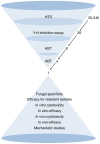
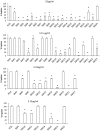



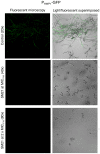
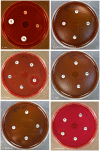

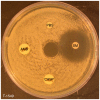

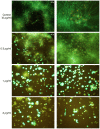
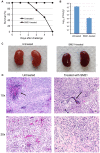
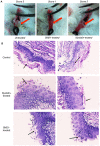

Similar articles
-
Use of Haploid Model of Candida albicans to Uncover Mechanism of Action of a Novel Antifungal Agent.Front Cell Infect Microbiol. 2018 Jun 8;8:164. doi: 10.3389/fcimb.2018.00164. eCollection 2018. Front Cell Infect Microbiol. 2018. PMID: 29938200 Free PMC article.
-
Development of Anti-Virulence Approaches for Candidiasis via a Novel Series of Small-Molecule Inhibitors of Candida albicans Filamentation.mBio. 2017 Dec 5;8(6):e01991-17. doi: 10.1128/mBio.01991-17. mBio. 2017. PMID: 29208749 Free PMC article.
-
Proteomics Analysis of Candida albicans dnm1 Haploid Mutant Unraveled the Association between Mitochondrial Fission and Antifungal Susceptibility.Proteomics. 2020 Jan;20(1):e1900240. doi: 10.1002/pmic.201900240. Epub 2019 Dec 18. Proteomics. 2020. PMID: 31811746
-
Biofilm of Candida albicans: formation, regulation and resistance.J Appl Microbiol. 2021 Jul;131(1):11-22. doi: 10.1111/jam.14949. Epub 2020 Dec 9. J Appl Microbiol. 2021. PMID: 33249681 Review.
-
Synergistic combinations of antifungals and anti-virulence agents to fight against Candida albicans.Virulence. 2015;6(4):362-71. doi: 10.1080/21505594.2015.1039885. Virulence. 2015. PMID: 26048362 Free PMC article. Review.
Cited by
-
Competitive Interactions between C. albicans, C. glabrata and C. krusei during Biofilm Formation and Development of Experimental Candidiasis.PLoS One. 2015 Jul 6;10(7):e0131700. doi: 10.1371/journal.pone.0131700. eCollection 2015. PLoS One. 2015. PMID: 26146832 Free PMC article.
-
Antifungal and Anti-Biofilm Activity of Essential Oil Active Components against Cryptococcus neoformans and Cryptococcus laurentii.Front Microbiol. 2017 Nov 7;8:2161. doi: 10.3389/fmicb.2017.02161. eCollection 2017. Front Microbiol. 2017. PMID: 29163441 Free PMC article.
-
In Vitro and In Vivo Antifungal Activity of Lichochalcone-A against Candida albicans Biofilms.PLoS One. 2016 Jun 10;11(6):e0157188. doi: 10.1371/journal.pone.0157188. eCollection 2016. PLoS One. 2016. PMID: 27284694 Free PMC article.
-
Candida-Associated Denture Stomatitis and Murine Models: What Is the Importance and Scientific Evidence?J Fungi (Basel). 2020 May 23;6(2):70. doi: 10.3390/jof6020070. J Fungi (Basel). 2020. PMID: 32456172 Free PMC article. Review.
-
New Peptide Based Fluconazole Conjugates with Expanded Molecular Targets.Pharmaceutics. 2022 Mar 23;14(4):693. doi: 10.3390/pharmaceutics14040693. Pharmaceutics. 2022. PMID: 35456526 Free PMC article.
References
-
- Wisplinghoff H, Bischoff T, Tallent SM, Seifert H, Wenzel RP, et al. (2004) Nosocomial bloodstream infections in US hospitals: analysis of 24,179 cases from a prospective nationwide surveillance study. Clinical infectious diseases: an official publication of the Infectious Diseases Society of America 39: 309–317. - PubMed
-
- Odds FC (1988) Candida and candidosis: a review and bibliography. Bailliere Tindall.
-
- Webb BC, Thomas CJ, Willcox MD, Harty DW, Knox KW (1998) Candida-associated denture stomatitis. Aetiology and management: a review. Part 2. Oral diseases caused by Candida species. Australian dental journal 43: 160–166. - PubMed
-
- Douglas LJ (2003) Candida biofilms and their role in infection. Trends in microbiology 11: 30–36. - PubMed
Publication types
MeSH terms
Substances
LinkOut - more resources
Full Text Sources
Other Literature Sources
Medical
Miscellaneous

